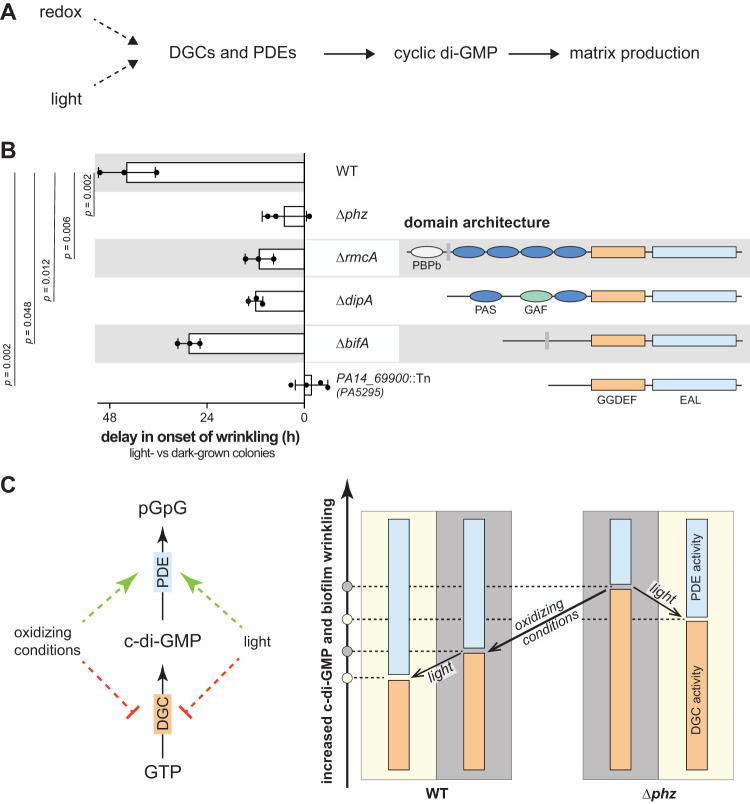FIG 4.
c-di-GMP levels are altered in dark versus light through dedicated sensing mechanisms. (A) Schematic for the proposed influence of two external inputs, redox and light, on c-di-GMP levels and matrix production via enzymes with diguanylate cyclase (DGC) or phosphodiesterase (PDE) activities. (B, left) Delay in onset of wrinkling in the light compared to onset of wrinkling in the dark for colony biofilms of PA14 WT and the indicated mutants grown on colony morphology assay medium. Each bar represents the mean from at least three biological replicates (circles), and error bars show the standard deviations. P values were determined using unpaired two-tailed t tests and are listed on the left. (Right) Domain architectures of c-di-GMP-modulating enzymes represented by each mutant. (C, left) Schematic of how external factors, i.e., oxidizing conditions or light, might influence c-di-GMP modulating enzymes, specifically by affecting DGC or PDE activity. (Right) Model showing how c-di-GMP levels decrease with oxidizing conditions, i.e., absence of phenazines, and under light exposure in both PA14 WT and Δphz colony biofilms.

